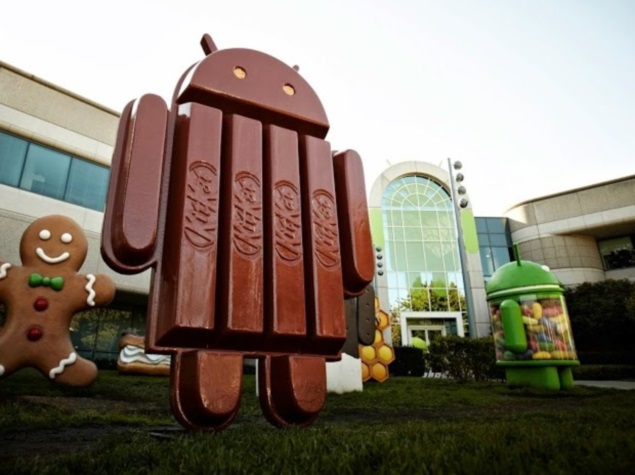- Home
- Mobiles
- Mobiles News
- Google to Boost App, Battery Performance in Next Android Version: Report
Google to Boost App, Battery Performance in Next Android Version: Report

On KitKat, ART can be enabled from an Android device's hidden developer options, but the developer homepage explains that "Dalvik must remain the default runtime or you risk breaking your Android implementations and third-party applications," and adds that "some techniques that work on Dalvik do not work on ART."
The only downside of ART at the moment is that apps take up more storage space and install times are also longer. However, Google might improve the current performance by the time it releases the next version.
First spotted by XDA Developers, the code commits made to AOSP's master branch feature a statement - "Dalvik is dead, long live Dalvik! DO NOT MERGE".
This is by far not an indication that Android devices running KitKat will immediately start using ART as a default, or that code changes will be made by Google in the next minor iteration of Android. Notably, Google just released an incremental update to Android with security fixes, bringing the version number up to Android 4.4.4.
The update might be featured in the much-anticipated Android 5.0 version that Google is expected to launch at I/O 2014 next week.
We had recently reported how Android 4.4.x KitKat was present on 13.6 percent of all devices running Android. On the other hand, the Android Developers website reported that Android 4.3 Jelly Bean was installed on 10.3 percent of Android devices.
Get your daily dose of tech news, reviews, and insights, in under 80 characters on Gadgets 360 Turbo. Connect with fellow tech lovers on our Forum. Follow us on X, Facebook, WhatsApp, Threads and Google News for instant updates. Catch all the action on our YouTube channel.
Related Stories
- Samsung Galaxy Unpacked 2025
- ChatGPT
- Redmi Note 14 Pro+
- iPhone 16
- Apple Vision Pro
- Oneplus 12
- OnePlus Nord CE 3 Lite 5G
- iPhone 13
- Xiaomi 14 Pro
- Oppo Find N3
- Tecno Spark Go (2023)
- Realme V30
- Best Phones Under 25000
- Samsung Galaxy S24 Series
- Cryptocurrency
- iQoo 12
- Samsung Galaxy S24 Ultra
- Giottus
- Samsung Galaxy Z Flip 5
- Apple 'Scary Fast'
- Housefull 5
- GoPro Hero 12 Black Review
- Invincible Season 2
- JioGlass
- HD Ready TV
- Laptop Under 50000
- Smartwatch Under 10000
- Latest Mobile Phones
- Compare Phones
- Vivo Y500 Pro
- Realme GT 8 Pro Aston Martin F1 Limited Edition
- Huawei Mate 70 Air
- Moto G57
- Moto G57 Power
- Motorola Edge 70
- Moto G Play (2026)
- Moto G (2026)
- MacBook Pro 14-inch (M5, 2025)
- Asus Vivobook S16 (S3607QA)
- iQOO Pad 5e
- OPPO Pad 5
- Noise Diva 2
- Noise Halo 2
- Acerpure Nitro Z Series 100-inch QLED TV
- Samsung 43 Inch LED Ultra HD (4K) Smart TV (UA43UE81AFULXL)
- Asus ROG Ally
- Nintendo Switch Lite
- Haier 1.6 Ton 5 Star Inverter Split AC (HSU19G-MZAID5BN-INV)
- Haier 1.6 Ton 5 Star Inverter Split AC (HSU19G-MZAIM5BN-INV)

















